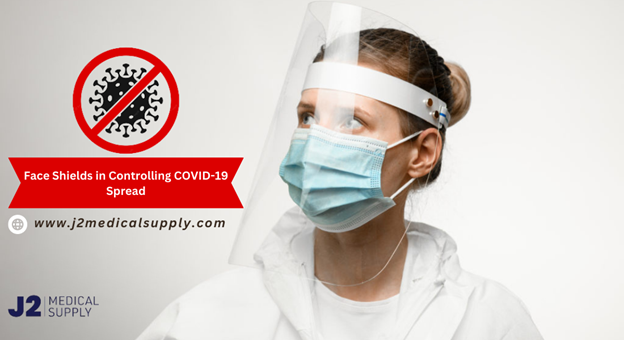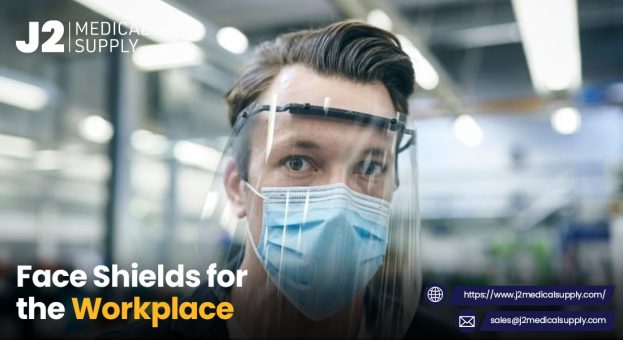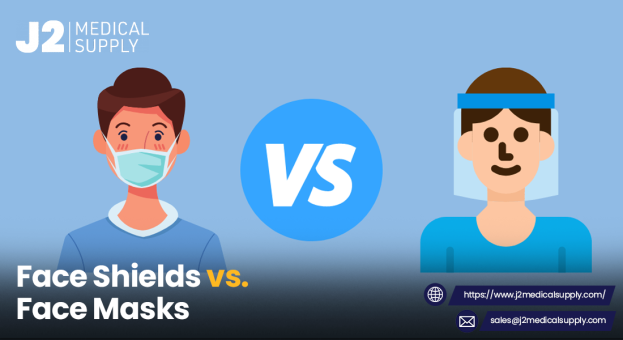In the ongoing battle against viral infections, face shields have emerged as a crucial tool for safeguarding public health. While face masks have been widely adopted, face shields offer an added layer of defence and present numerous advantages. This article dives deep into the benefits of face shields, comparing them to face masks and shedding light on face shield materials. We explore the advantages of reusable and disposable face shields, emphasizing their role as essential healthcare equipment in the fight against COVID-19. Stay informed on the latest medical equipment that can help us combat the pandemic effectively.
Benefits of Using Face Shields
Face shields offer many benefits that make them a valuable tool in the battle against COVID-19. These transparent protective barriers provide a crucial line of defence by shielding the wearer’s eyes and face from respiratory droplets. Unlike face masks, which primarily cover the mouth and nose, face shields offer comprehensive protection. They are especially beneficial in healthcare settings, where healthcare professionals are exposed to potential infection risks. Additionally, face shields are available in various materials, including reusable options that promote sustainability and disposable alternatives for convenient use. Embracing face shields as a public health tool and essential medical equipment contributes to effectively containing the Covid-19 virus.
How Do Face Shields Work?
Face shields provide a physical barrier between the wearer’s face and the external environment, particularly respiratory droplets. Comprising a transparent shield made of materials like polycarbonate or PET, they cover the entire face, including the eyes, nose, and mouth. This comprehensive coverage offers a crucial advantage in preventing the spread of COVID-19. Respiratory droplets may be released into the air when someone coughs, sneezes, or talks. Face shields act as a shield, intercepting these droplets and preventing direct contact with the wearer’s face. By providing an additional layer of protection along with face masks, face shields contribute significantly to reducing the transmission of the virus.
What Are the Different Types of Face Shields?
Regarding the benefits of face shields, different types are available to suit various needs and preferences. One category includes reusable face shields crafted from durable materials like polycarbonate or PET. These shields can be easily cleaned and disinfected, making them a sustainable option for long-term use. On the other hand, disposable face shields are convenient and often made from lightweight materials like clear plastic. These shields are designed for single-use purposes, offering a hygienic solution, especially in high-risk environments.
Furthermore, face shields come in various designs and sizes to accommodate different face shapes and provide a comfortable fit. Some feature adjustable headbands or elastic straps for customizable wear. Whether opting for a reusable or disposable option, the availability of different face shields ensures that individuals can choose the most suitable one to enhance their protection against COVID-19.
What Are the Materials Used to Make Face Shields?
Face shields are composed of various materials that provide both transparency and durability. The most common materials for face shields include plastic, acrylic, and polycarbonate. Plastic, often in PET (polyethene terephthalate), is lightweight and offers good optical clarity. Acrylic, also known as plexiglass, is another popular choice due to its transparency and impact resistance. It provides a clear field of vision while offering protection against respiratory droplets. Polycarbonate, known for its exceptional strength and durability, is commonly used in face shields that require higher impact resistance. This material offers excellent clarity, making it suitable for healthcare professionals and frontline workers who require enhanced protection. The choice of material depends on factors such as intended use, desired level of security, and the need for reusability. With these versatile materials, the benefits of face shields include a robust barrier against COVID-19 while ensuring optimal visibility and comfort for the wearer.
How to Choose the Right Face Shield?
Choosing the correct face shield is crucial for effective protection against COVID-19. First, consider the type of face shield that suits your requirements. Decide whether you prefer a reusable option for long-term use or a disposable shield for convenience. Next, focus on the material. Look for shields made of durable and transparent materials like polycarbonate or PET, ensuring optimal visibility and impact resistance. Consider the size of the face shield as well, as it should provide adequate coverage for your face, including the eyes, nose, and mouth. Adjustable headbands or elastic straps can offer a customized fit. Additionally, check for certifications or standards compliance to ensure the shield meets safety requirements. Finally, consider the specific environment or purpose for which you need the face shield, such as healthcare settings or public interactions. By carefully considering these factors, you can choose the right face shield that maximizes protection and comfort in the ongoing fight against COVID-19.
How to Wear a Face Shield Properly?
Properly wearing a face shield is essential to maximize its benefits in protecting against COVID-19. Start by thoroughly washing your hands with soap and water. Then, place the shield over your forehead, ensuring it covers your entire face, extending below the chin. Adjust the headband or elastic strap to achieve a secure and comfortable fit. Make sure there is no gap between the shield and your forehead. Avoid touching the front of the shield while wearing it, as it may be contaminated. When removing the shield, handle it only by the headband or strap, and clean and disinfect it according to the manufacturer’s instructions. Following these guidelines will help ensure that your face shield provides effective protection in the ongoing fight against COVID-19.
Are Face Shields Effective in Controlling Covid-19?
Centers for Disease Control and Prevention does not suggest wearing face shields for normal day activities or as a substitute for cloth face coverings. However, some people may select to use a face shield when they know that they’ll be in sustained close contact with others.
In conclusion, the benefits of face shields in controlling the spread of COVID-19 are undeniable. These transparent protective barriers provide comprehensive coverage, safeguarding the wearer’s eyes and face from respiratory droplets. With various types available, including reusable and disposable options, individuals can choose the most suitable face shield. The materials used, such as polycarbonate, acrylic, and PET, ensure durability and optimal visibility. As we navigate through the pandemic, staying updated on the latest advancements in medical equipment is crucial. At J2 Medical Supply, we prioritize keeping you informed about the latest developments in face shields and other essential healthcare equipment, ensuring you have access to the most effective tools for protecting public health.in face shields and other necessary healthcare equipment, ensuring you have access to the most effective tools for protecting public health.




